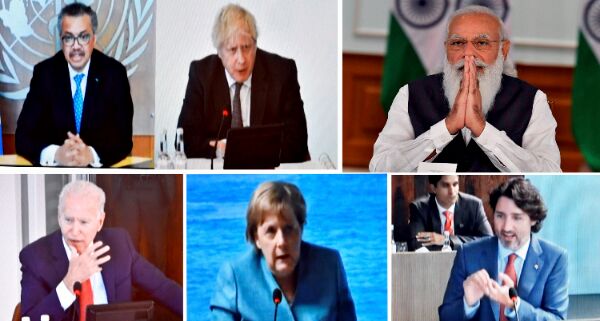For the future

In his speech at the recent G7 outreach meeting, PM Modi portrayed India as an ally of the G7 nations in defending 'shared values' from the threats of authoritarianism and violent extremism. In another session on 'Building Back Together: Open Societies and Economies' PM Modi stressed that the importance of ensuring advances in cyberspace remain in service of democratic values and not against them. In yet another session on 'Building Back Greener: Climate and Nature', the PM emphasised how developing nations need better access to transparent climate finance to promote a green shift as the world builds back its economy after the pandemic. In yet another session still, PM Modi presented his mantra of 'one world, one health' wherein he emphasised the central role of transparent and democratic societies to prevent future pandemics. As such, he also used the occasion to once again seek support for India and South Africa's endeavour at the WTO to get an intellectual property waiver on COVID-related technologies. All in all, even while he did not physically attend the conference due to India's ongoing COVID situation, PM Modi had a busy time at the recently concluded G7 summit. As may be gathered from the name of the sessions, the broad theme of this year's G7 summit is to "Build Back Better". But beyond assertions of simply doing better and a promise of future actions, this G7 summit did come with a tangible plan that may prove to be a bit of a dilemma for India. As it were, this summit was also the stage for the US and its allies to launch what could become a flagship project for the group — the Build Back Better World initiative of B3W for short. B3W is being envisaged as a massive global infrastructure initiative that will directly compete with China's existing Belt and Roads Initiative (BRI). The launch of B3W is clearly tied in with the Biden administration's plan to counter China on relevant fronts. BRI is Chinese President Xi Jinping's flagship project aimed at cementing China's place at the centre of much of the world. China's ambitious project to connect China to the world through infrastructure currently spans over a hundred countries and could potentially cover as much as one-third of the total volume of global trade. China has spent trillions around the world funding infrastructure projects as part of BRI, frequently referring to the initiative as a 'win-win' deal. But many countries are understandably concerned by the BRI and China's assertions of mutual benefit. Many of the countries where China is investing money for infrastructure projects are poorer nations that cannot afford such projects by themselves. Instead of offering such projects as part of grants, China offers no-hassle loans based on opaque contracts. Many countries, including the US and its allies, have raised concern over China using 'debt diplomacy' to trap poorer nations into owing China money and favours. Concerns have also been raised about the disruptive nature of this development as the build-up of certain infrastructure locks the country into environmentally unsustainable activities. India too has significant concerns regarding the BRI and its hidden motives. Beyond suspecting China of using debt diplomacy and other underhanded means, India also suspects China of using BRI development to slowly surround India with its military infrastructure. India has watched on at the alarms as China has made inroads into India's neighbours and regional allies like Sri Lanka to secure facilities that could be used by the Chinese military to encircle India. India has, naturally, declined to join the BRI citing its objection with the fact that a part of the China-Pakistan Economic Corridor (CPEC) that is being developed as a part of BRI goes through Pakistan-Occupied Kashmir. But, even if India itself declines to join the BRI, it cannot afford to ignore it. Beyond the security concerns that the project poses to India, BRI is also a way for China to gain diplomatic goodwill and relations in India's backyard. India alone cannot take on BRI with its ever-expanding reach and extreme amount of capital. This is where the B3W could come in. The B3W plans for the G7 and its partners to mobilise private sector finance in four key areas: climate, health security, digital technology and gender equity. All this will be delivered with finance that will emphasise transparency. By itself, this could be an attractive deal for India. While India stayed away from BRI for a number of reasons, there is no denying that India could benefit from being a part of such infrastructure development initiatives. But, more importantly, it will give India support only found in numbers to take on China and tackle its attempts to wean away India's allies using the allure of its BRI. That said, India, by all accounts, is not jumping on the opportunity with unbridled enthusiasm. Indeed, India has reacted with a cautious assertion that it will 'study' the proposal in detail before it can make a statement on where it stands with B3W. While India could join the initiative for security concerns as it joined the Quad, there is still much that isn't clear about this new proposal. How will it be funded? What is the timeline? What will be the stipulations a country must fulfil to acquire infrastructure loans under this initiative? The G7 countries, particularly the US, would be particularly keen for India to join the initiative as Indian participation could give a huge boost to the B3W in India's neighbourhood. But, for a country that values prudence and sovereignty in its foreign relations, there are important questions that India must get the answers to before it chooses to dive in.



